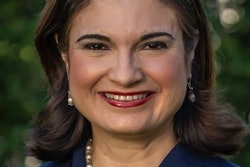Following the model of four-year institutions, community colleges across the country have now begun to hire chief diversity officers (CDOs) at increasing rates, according to a recently published book by diversity officers and education professionals.
The book, Inclusive Directions: The Role of the Chief Diversity Officer in Community College Leadership, co-authored by Dr. Clyde W. Pickett, James A. Felton III and Michelé E. Smith, details the slow, but growing administrative shift of the CDO role at these institutions.
“Community colleges have long been places for diversity in terms of representation of students who enjoy open access to higher education,” the authors say. “However, having a central role, central office or central individual to provide guidance for this diverse population has been slow to develop.”
The first recognition of diversity and inclusion at community college stretches as far back as 1966, when students created the first Black Student Union (BSU) at San Francisco State, the scholars note. This activism and call for more diversity within the student population, and then at the faculty level, sparked conversations at other campuses and a move to create an institutional role that could prioritize diversity and inclusion at the administrative level.
Insight into why this phenomenon is gaining traction today calls attention to a shifting demographic of students attending school, as more students of color, low-income students and first-generation students enter into higher education than in previous years.
Sharon Bland, chief equity and inclusion officer at Montgomery College in Maryland, says that hiring people under a “chief diversity officer” title has become more comprehensive, which is why many community colleges are moving toward including the words equity and inclusion in their titles, she says.
“In our current landscape, we are really moving beyond the notion of counting the numbers of people who are in the room,” Bland adds. “When we think about the broader notion of equity, we talk about making sure that we look at who’s trying to be in the room and who can’t … and we look at making sure that people feel safe when they are isolated or separated and making sure that it’s about the experience of feeling that they are in equitable situations.”















